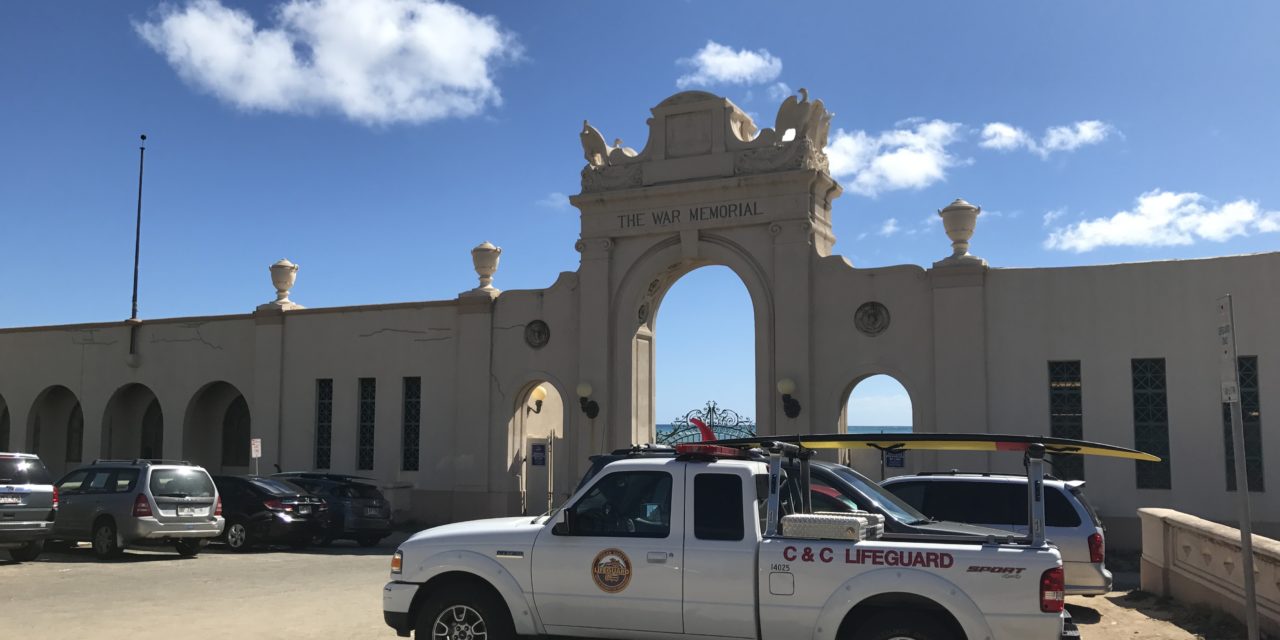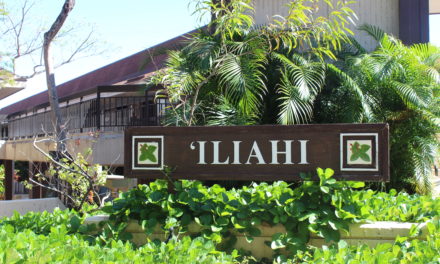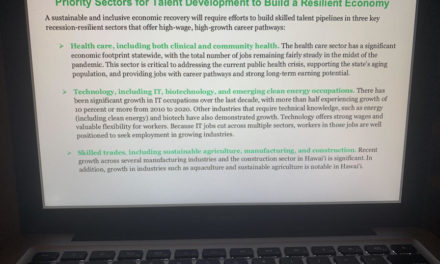By Chris Takahashi | Staff Writer
It has been nearly 40 years since the Waikīkī War Memorial Natatorium was last open to the public for swimming. Since the 1979 closure of the swim stadium and war memorial — dedicated to those from the territory of Hawai‘i that served during World War I — little has been done in terms of concrete action to either restore or tear down the nationally-recognized historic monument.
However, the ongoing conversation to refurbish and open the war memorial swim stadium for the public to enjoy, once again, has been bolstered by a new design by Dr. Hans Krock, University of Hawai‘i Engineering Professor Emeritus, and Dr. Alfred Yee, who served as a consulting engineer on the design of the USS Arizona Memorial at Pearl Harbor.
The new design for a swimming facility at the Natatorium has been championed by a number of groups. In particular, the National Trust for Historic Preservation, Historic Hawai’i Foundation, and Friends of the Natatorium are all counted as active supporters.
Oʻahu’s own Bruno Mars, known primarily for his chart-topping hits in the music industry, has even joined the efforts. He’s linked up with Heineken USA for an Indiegogo crowd-funding campaign that will donate funds to the National Trust for Historic Preservation in support of restoring the Natatorium.
Backers of the project, which has already exceeded its fundraising goal ahead of the June 30 deadline, can make a donation and receive tickets to see a show during Mars’ 24K Magic World Tour later this summer.
This swimming design from Krock and Yee, accessible online from the Historic Hawai‘i Foundation, focuses on three principles critical to the construction of a salt-water pool relying upon water from the adjacent ocean. The first principle stipulates that the pool will be “clean”; thereby having a constant and natural (no chemicals or pumps required) filtration system that would “fully exchange the Natatorium with ocean water at least six times per day.”
The second design principle of “clear” is important given the history of the Natatorium. The poor water circulation of the original design meant that pool closures were commonplace, even years before the official closure in 1979. A gently sloping, concrete bottom will ensure that algae and sand do not accumulate, as in the past, and that water clarity “permits lifeguards to see the bottom at all times.”
“Simple” is the third design principle, and as it suggests, the new swim design would not be beset by costly maintenance costs or upkeep due to mechanical pumps and chemicals. The barrier reef just offshore at Kaimana Beach also keeps wave activity to a minimum, which would serve to maintain smooth swimming conditions, while still allowing for a predictable flow of water for filtration purposes.
While the most recent iteration of a design was presented to the Honolulu City Council last November, an ongoing Environmental Impact Statement (EIS) report still does not include the latest design proposal from Krock and Yee.
Supporters are hopeful that the city does consider the proposal in the current EIS, which is scheduled to be complete in 2018 or 2019. If the new design is not considered, the city may consider demolishment or “conversion” of the space into a land-locked swimming pool with pumps.
Groups that support preservation and restoration, including the Friends of the Natatorium and the National Trust for Historic Preservation, do not support either of these two options. According to Friends of the Natatorium President, Mo Radke, it seems that the option most preferred by the City and County, and as such outlined by the language of the EIS, is for demolition of the infrastructure, including all barrier walls and bleachers that once comprised the swimming experience at the Natatorium.
A resolution to include the newest design proposal in the ongoing EIS report was deferred by the Honolulu City Council on January 19, 2017.
Radke, a U.S. Navy veteran, finds it unfortunate that the war memorial and swimming facility has been left in disarray for decades.
“I think it’s important that when we decide to represent and appreciate the service of our Veterans that we don’t allow what we decided to honor them with to crumble,” Radke said.
The City and County of Honolulu did, however, approve plans for and allocate $11 million for a swim stadium refurbishment in 1998. The construction was halted when the Kaimana Beach Coalition, a group opposed to the restoration of a swimming pool, filed a lawsuit to prompt the State Department of Health to enforce rules typically reserved for a freshwater pool. The issue, at the time, was that no rules had been promulgated to regulate saltwater swimming pools. Further legal battles and a vowed commitment by former Honolulu Mayer Mufi Hannemann to stop spending money on restoring the Natatorium have since kept the project sidelined.
Although rules for saltwater pools have since been developed, the newest swim design by Krock and Yee could be regarded as a “marine pool” or “protective cove,” and is therefore subject to different regulations than those of a “swimming pool.” Strategically, it is the design of the swimming facility, which utilizes a much more constant flow of water through concrete chevrons, that ensures that the water quality will be analogous to that of the ambient ocean environment.
Radke added, “Many folks have a physical connection to the Natatorium. It’s a place where they remember a parent or grandparent teaching them how to swim. There’s a human connection as it is a living memorial, as it was intended to be.”
To remain up to date on the status of the Natatorium restoration efforts, and for more information on how to become involved, check out the website for the Friends of the Natatorium here.






